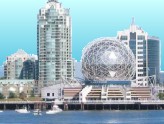|
From a local (Vancouver) Auction - The "PARK LANE" - Almost Like New All-Original 1939 DeForest-Crosley 9D991 9-Tube All-Wave Console Radio, just Beautiful
In a Nutshell
Each time you walk by this 70 years young Canadian beauty, your heart will bump faster. It's an eye candy - and it's an ear candy too, as it has a high-power push-pull amplifier and 6 frequency bands
Introduction:
Only two weeks after I found (and sold) the DeForest Crosley "LISZT" (model 8D991), I successfully bid on a very near relative, the model number 9D991 with name "PARK LANE", which also is not documented in the internet. As for the LISZT there is however an obvious 8-tube relative on the web site of Roger DeForest, a "distant relative" of Lee DeForest (see ref. 1 below for a model 9D891). Often both Rogers Majestic (R or M in model number) and DeForest Crosley (D in model number) had very similar sets. The first digit indicates the year of manufacture (1939) and the second digit the number of tubes (9). The last two digits enumerate variants, the codes are very cryptic, to say the least: the LISZT 8D991 has a relative 8D992 with additional station preset buttons, the 9D991 as well as the 9D891 have those station buttons themselves. The schematics, parts list and chassis information from the documentations by the Radio College of Canada (RCC) are available for free at ref.2 below (Data sheets 58A, 59, 60). Here is the list of radios covered:

The radio is:
- Very rare
- In extremely good and original condition
- A milestone in Canadian radio history and radio technology
Additional information:
1. http://www.deforestradio.com/images/9d891.jpg
2. http://www.nostalgiaair.org/resources/S00000026%20ROGERS%20MAJESTIC.htm
3. http://www.philcorepairbench.com/biascell.htm
About my radio:
The console was built in 1939, as a higher-end 9-tube set, using several unique construction details:
- Full wave rectifier using two 2X3 diodes or one 80 rectifier
- Rogers spray-shield tubes (3 still there, testing excellent and looking like new)
- A very rare and expensive 6X6 magic eye tube (opens symmetrically), weak glow but still ok (see text)
- Push-pull audio end stage with two 41M tubes (replaced by two equivalent 6K6GT)
- Very nice 6-band reverse painted dial glass
- Use of unusual components like 2 bias cells (replaced with two standard batteries [see under techies])
- Huge 12" field coil speaker
- 6 station preset push-buttons for AM (purely mechanical devices, operating on the tuning condensor shaft)
I have restored the radio as described under techies below. It is in very good and original condition, having next to no veneer damages. The set has been thoroughly cleaned and in-depth serviced. All moving parts have been treated with contact spray, and the bias cells replaced by standard batteries (rejuvenation was excluded, since they were missing, see below). The 6X6 magic eye tube is still working, although with reduced brightness (see pict.7). A perfect 6X6 costs about 200US$, it could be replaced with a 1629 tube (would require modification of the heater voltage by a voltage doubler) or a 6E5 tube, available on request (requiring modification of the socket). The radio plays loud and clear on AM/BC (see movie by clicking on last picture), where it has good sensitivity and selectivity over the whole band spread. It finds stations on all 5 SW bands, with an antenna to be optimized at the final location of the radio. A modern ferrite antenna for AM is included in the auction. The radio in Rogers language should be called a 10-tube radio, since it has the normally two rectifier diodes 2X3 factory replaced by a type 80 full wave rectifier. The extra tube count is used as a separate second detector (6P5). The push-buttons for preselecting AM stations are working perfectly, moving back and forth both the dial pointer and the tuning knob.
For the historians only:
Edward Samuel ("Ted") Rogers (1900-1939): kid telegrapher, invented the first A/C tube, in 1925 established "Canada's First Rogers Batteryless" (CFRB) both, as a radio factory and a broadcast station and in 1928 the Rogers-Majestic Corporation, in 1934 acquired Consolidated Industries, which built DeForest-Crosley Radios in Canada, in 1933 created the Spray-Shield Tube which eliminated the need for protective tube cans, and conducted the first public demonstration of television in Toronto, died much too early.
Lee de Forest (1873-1961): "father of radio" and "grandfather of television", invented the Audion tube in 1906,
in 1934 established Lee de Forest, Inc., Los Angeles, Calif.,
supported for Nobel Prize for Physics, in 1959 received an honorary Oscar instead, owned 180 patents, but needed Edwin Armstrong to understand them, and David Sarnoff to commercialize them, married 4 times.
Powel Crosley (1886-1961): together with business savvy brother Lewis made money with gadgets, and from 1921 on with radios, after his son wanted one, by 1924 became world's largest radio manufacturer, participated in fishing tournaments, owned Nikassi Island in Canada and Bull Island off the coast of South Carolina, and many houses.
For the techies only:
Six of the nine tubes are original Rogers tubes, three of them spray-shield type. All test above average, including the very expensive 6X6 magic eye tube, which however has a weakened but still accpeptable glow. This tube costs new around 200$ and will be part of the auction, it could be substituted with the cheaper replacement tube 1629 or 6E5, which both have different patterns and require modifications to the chassis. The radio originally used 2 Mallory bias cells (ref.3 above). This are small devices, which function like a low power battery, and supply negative bias to tube grids, without necessitating a separate power supply. These cells work with electrolytes and normally have been dried out, but can be rejuvenated, by boiling them for about one minute in water, slowly cooling them down to room temperature still immersed in water, and resealing them. The former owner apparently didn't know this and replaced them with modern 1.5 Volt batteries - a perfectly working solution too. I replaced the two batteries with new ones, which should last for at least another 10 years. Don't worry, there are always standard remedies available, how to replace failing Rogers components with normal ones, should that ever happen.
Here are the specifications:
Technical Description of Item |
| Manufacturer |
Rogers Majestic Corp. Toronto, Canada, for De Forest Crosley Limited |
| Model |
"PARK LANE", chassis 9D991 |
| Type |
9-tube 6-band console radio |
| Production Year |
1939 |
| Serial Number |
C 71445 |
| Cabinet |
7-tone wood with inlay stripes |
| Dial |
Reverse painted illuminated glass dial with celluloid cover and wood frame |
| Knobs |
4 gray swirled plastic knobs, 6 brown swirled preset push-buttons |
| Frequency Range |
520-1750 kHz, 5.9-6.2 MHz, 9.4-9.9 MHz, 11.5-12.2 MHz, 14.8- 15.6 MHz, 17.3-18.2 MHz |
| Controls |
Volume, on/off - tone, band switch, tuning, 6 preset station buttons |
| Tube line-up |
80(Rect),6K7M(RF),6J8(Osc),6K7M(IF),6P5(Det,Inv),6J5(1stAudio,2x6K6GT(PP-Audio),6X6(Eye) |
| Size (WxDxH) |
26" x 15" x 38" |
| Weight |
73 lbs = 33.3 kg |
| Comment |
Excellent condition, serviced and perfectly working |
|




